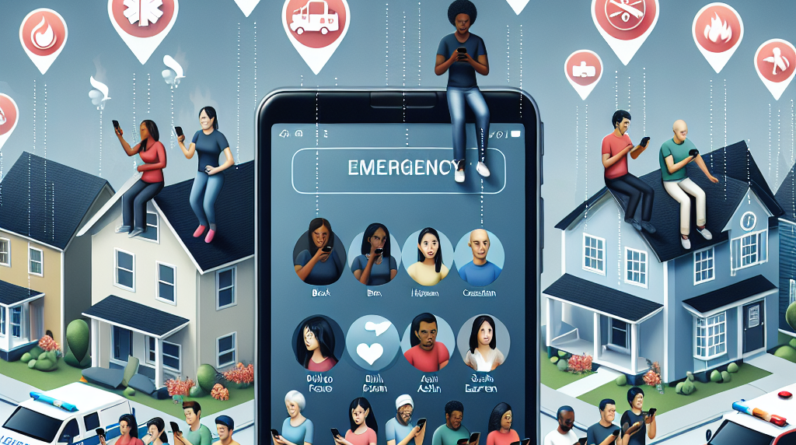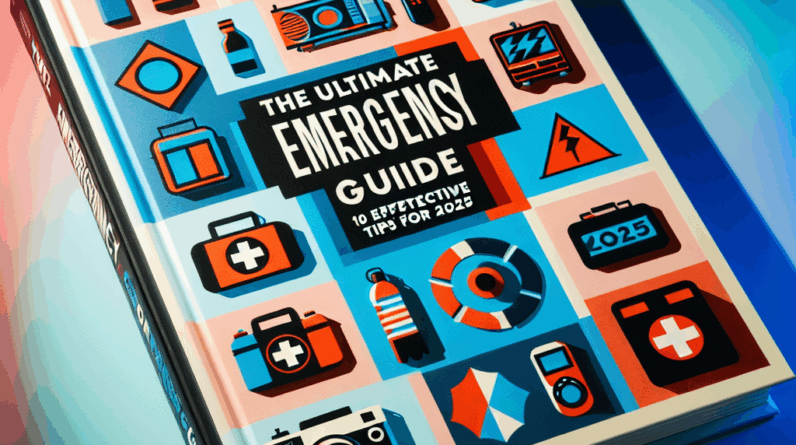
Crowdsourcing transforms how we manage crises by harnessing the collective power of communities worldwide. It’s an effective tool for gathering information, rallying resources, and enhancing emergency responses through shared knowledge and efforts.
Understanding Crowdsourcing
# What is Crowdsourcing?
Crowdsourcing is a powerful method that involves tapping into the collective intelligence of a large group of people to gather ideas, feedback, or solve challenges. It’s akin to conducting a massive brainstorming session, but without the need for physical presence. In emergency situations, this approach facilitates aid from a global community, aligning efforts towards a shared goal. My experiences have underscored its effectiveness.
Using crowdsourcing, you benefit from a variety of perspectives, particularly useful in crisis scenarios. For example, during natural disasters, real-time updates from locals provide crucial insights for those managing the emergency response.
I’ve observed that traditional methods often fall short in emergencies. However, leveraging the crowd can lead to a more adaptive and effective means of assistance.
# The Benefits of Crowdsourcing
Crowdsourcing in emergencies can quickly mobilize resources, critical when time is crucial. I recall a community initiative during a severe storm that enabled neighbors to share essentials like food and shelter.
This approach also enhances the accessibility of important information, allowing for the rapid collection of essential data from affected individuals, which leads to improved decision-making and strategies in relief efforts. It also fosters a sense of empowerment among community members, boosting involvement and sparking surprising levels of creativity and commitment.
# Examples of Effective Crowdsourcing
A notable instance of effective crowdsourcing occurred during the 2010 Haiti earthquake, where various platforms facilitated the exchange of crucial information about needs and conditions, proving vital for coordinated relief efforts.
Platforms like Nextdoor and social media groups also play significant roles in crisis situations by fostering community solidarity, which is crucial during such times. My participation in several initiatives that originated from social media invites has shown the strength of these platforms in crisis response.
These instances demonstrate the potential of crowdsourcing not only in raising awareness but also in providing practical aid, highlighting the collective creativity and resilience of communities.
Establishing a Crowdsourcing Platform
# Choosing the Right Platform
The initial step in a crowdsourcing initiative during emergencies is selecting an appropriate platform. Different platforms may be more suitable depending on the context. For instance, Twitter is excellent for quick information sharing, while Facebook groups are better for detailed discussions.
It’s crucial to consider where the target audience spends their time online to effectively engage them. Focusing on platforms already popular within your community can significantly lower barriers to participation.
Remember to ensure the platform is accessible to everyone, as complexity can deter participation, particularly among those who are less technologically adept.
# Inviting Participation
After setting up your platform, the next move is to encourage people to participate. Effective communication is key here. I’ve had success with inviting, friendly messages that make the effort feel like a communal activity, which often results in higher engagement.
Organizing live events, either virtual or in-person, can also enhance engagement by building trust and fostering relationships among participants, encouraging open sharing of experiences and needs.
Sharing stories from individuals who have benefited from crowdsourced aid can inspire others to get involved, as they feel part of a larger effort.
# Managing Contributions
Once contributions begin, it’s crucial to manage them effectively to prevent disorder. Establishing clear guidelines on what information is useful, how often updates should be provided, and who to contact with questions is essential.
Acknowledging contributions is also important; simple gestures of thanks can encourage continued involvement. Recognition can be expressed through shoutouts or personal notes.
Having moderators to oversee discussions and maintain a constructive environment can be incredibly beneficial. Engaged moderators can help manage interactions and keep efforts focused and effective.
Implementing Response Strategies
# Assessing Needs
In the throes of an emergency, quickly identifying the needs of those affected is vital. Crowdsourcing shines in this area by enabling real-time feedback from participants, which guides the response strategy.
Simple tools like surveys or polls can effectively determine immediate needs, allowing for targeted resource distribution. I recall using these tools during a local flood to identify and address shortages efficiently.
Prioritizing urgent needs and addressing them swiftly is crucial, and clear communication about actions taken is essential for maintaining transparency and trust within the community.
# Coordinating Efforts
Once needs are assessed, the next step is to coordinate volunteers and resources effectively. A clear plan and dedicated communication channels, like a Slack group, can streamline the flow of information, reducing redundancy and preventing miscommunication.
Assigning specific roles based on individual skills and resources can organize and optimize the response. Clear role distribution fosters a structured and effective approach to emergency management.
# Evaluating Impact
After an emergency, reflecting on the crowdsourcing effort’s impact is crucial. Conducting post-event evaluations to gather feedback helps identify what was successful and what could be improved. Surveys can gauge the effectiveness of the response and facilitate continuous improvement.
Sharing outcomes with the community reinforces the value of their contributions and showcases the tangible benefits of collaborative efforts. This acknowledgment can enhance the sense of community achievement and readiness for future challenges.
Building a Community of Support
# Encouraging Continuous Engagement
It’s important not to let the momentum wane after an emergency. Keeping the community engaged with regular updates about ongoing initiatives or future needs helps maintain involvement.
Creating a supportive culture prepares the community for future crises. Regular community check-ins and events can strengthen bonds and readiness.
Additionally, establishing an online community resource hub can offer a platform for ongoing assistance and resource sharing, transforming simple connections into a robust support network.
# Fostering Trust Within the Community
Trust is the cornerstone of any community effort. Transparency in the use of contributions and maintaining open communication are critical for building trust. Regular updates and sharing of financial reports can enhance transparency.
Consistent communication about both successes and setbacks helps manage expectations and fosters a supportive community atmosphere. Celebrating community stories and achievements can inspire further participation and strengthen communal bonds.
# Creating a Sustainable Model for Assistance
Sustaining a crowdsourcing initiative over time is essential. Exploring different models to find what best suits the community, like partnering with local organizations, can enhance support and resources.
Developing a long-term strategy for evolving community support efforts, even outside of emergencies, can ensure readiness for future challenges. Regular outreach and educational events can keep the community engaged and prepared.
FAQs
# 1. What is crowdsourcing?
Crowdsourcing involves gathering ideas, services, or content by soliciting contributions from a broad audience, primarily online. It is especially effective for real-time information gathering during emergencies.
# 2. How can crowdsourcing help in emergencies?
Crowdsourcing can quickly mobilize resources, offer diverse perspectives, and empower communities. It facilitates real-time data collection, which is crucial for informed decision-making in crisis situations.
# 3. What platforms are best for crowdsourcing assistance?
The best platforms for crowdsourcing depend on the preferences of your community. Commonly used platforms include social media like Facebook and Twitter, community apps like Nextdoor, and specific crowdsourcing websites.
# 4. How can I encourage others to participate in crowdsourcing efforts?
To encourage participation, use engaging content and clear communication. Recognizing contributions and sharing success stories can also motivate involvement. Hosting events is another effective strategy to boost engagement.
# 5. What should I do after an emergency response is completed?
After an emergency, it’s important to evaluate the impact of your response, keep the community engaged, and build trust. Continuously sharing updates and fostering community initiatives are crucial for maintaining relationships essential for future assistance efforts.




